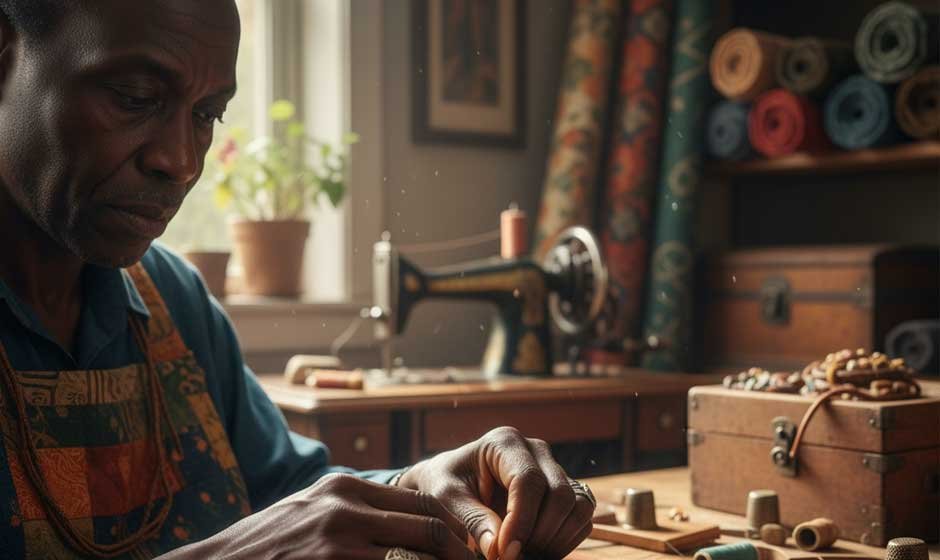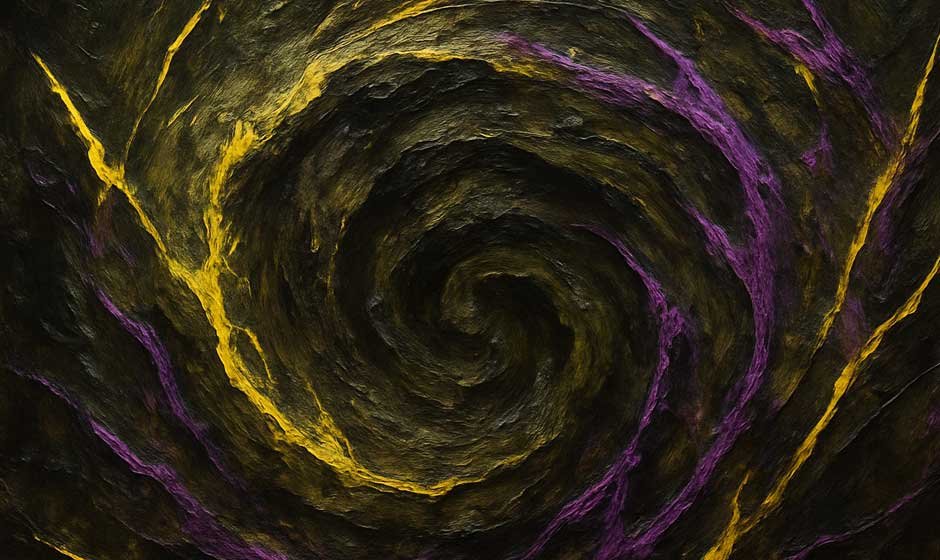Table of Contents
ToggleI. Introduction: Unveiling the Hidden Narratives of Black Craftsmanship
Throughout history, the remarkable contributions of Black artisans have frequently been overlooked, their narratives often overshadowed by dominant historical accounts. Yet, within the intricate details of their creations, a rich tapestry of resilience, innovation, and profound cultural significance unfurls. These Black crafters, often laboring under immense duress, not only shaped the material world around them but also imbued their work with deep meaning, resistance, and a powerful sense of identity. Recent scholarship, particularly Robell Awake’s insightful book, has begun to illuminate these unsung heroes, revealing the enduring legacy of their ingenuity and artistry. This article aims to delve into the captivating history of Black craftsmanship, celebrating the skill, community, and agency that profoundly defined their contributions.
II. The Roots of Black Craft: From Enslavement to Expression
The story of Black craftsmanship in America is inextricably linked to the transatlantic slave trade. Enslaved Africans arrived on these shores carrying a rich inheritance of knowledge and skills from their homelands. Their expertise spanned metalworking, weaving, pottery, and woodworking, among other crafts. These traditional skills, refined over countless generations, proved vital for survival in a harsh and unfamiliar world. Yet, many were also forcibly taught new trades by their enslavers, their labor ruthlessly exploited for economic gain.
Even amidst the brutal realities of enslavement, craft frequently emerged as a potent tool for cultural preservation and resistance. Through their artistry, Black artisans ingeniously maintained ties to their African heritage, subtly embedding symbols and techniques that affirmed their identity and unwavering resilience. The very act of creation, even under duress, transformed into a profound form of self-expression, a means to assert their humanity and creativity in the face of dehumanization. This inherent duality—craft as both forced labor and a powerful conduit for cultural continuity—forms the intricate foundation of Black craftsmanship.
III. Craft as Skill and Innovation: Mastering Diverse Trades
Black artisans consistently showcased extraordinary skill and groundbreaking innovation across a vast spectrum of trades. Whether it was the intricate ironwork forged by blacksmiths or the robust structures crafted by woodworkers, their artistry frequently stood unrivaled. These individuals were far more than mere laborers; they were true masters of their crafts, often spearheading new styles, refining techniques, and devising functional designs that profoundly shaped American art and design.
Consider blacksmiths, for example, who were indispensable to the agrarian economy, meticulously forging tools, hardware, and architectural components. Their remarkable ability to manipulate metal with both precision and artistic flair was highly prized. In parallel, Black woodworkers constructed everything from essential furniture to grand, elaborate buildings, frequently displaying a sophisticated command of joinery and aesthetic principles. Visionary quilters, such as Harriet Powers, elevated everyday objects into profound artistic declarations, intricately weaving narratives and cultural symbols into their textile masterpieces. And dressmakers, like the incomparable Ann Lowe, fashioned garments of breathtaking beauty and sophistication, adorning society’s elite while, regrettably, often receiving no public acknowledgment for their extraordinary talent.
IV. Notable Black Crafters and Their Impact
A. Richard Poynor: The Ladderback Chair Innovator
Richard Poynor, an enslaved chairmaker hailing from central Tennessee, serves as a powerful testament to the inventive spirit inherent in Black crafters. He is widely recognized for pioneering a distinct style that has since become synonymous with the modern ladderback chair. Poynor’s designs were remarkable not only for their practical utility but also for their aesthetic sophistication, leaving an indelible mark on furniture making for generations. His profound legacy was carried forward by his family, with three successive generations of chairmakers meticulously upholding his tradition in Williamson County, Tennessee, well into the 1940s. Their collective work vividly underscores the deep-seated skill and unwavering artistic continuity that flourished within Black communities.
B. Harriet Powers: A Quiltmaker’s Celestial Narratives
Harriet Powers, a farmer and visionary quiltmaker from rural Georgia, masterfully transcended the conventional boundaries of craft, transforming textiles into a powerful medium for storytelling. Her extraordinary narrative quilts, especially one completed around 1898, are revered for their intricate designs and profound historical resonance. A particularly famous central square vividly depicted the Leonid meteor shower of 1833, an event imbued with deep significance for enslaved people who often interpreted it as a potential harbinger of judgment or even an end to their bondage. Powers’ quilts are far more than mere decorative pieces; they stand as compelling visual chronicles of history, culture, and deeply personal experiences, continuing to enlighten and inspire audiences to this very day.
C. Ann Lowe: The Uncredited Couturier
Ann Lowe, a third-generation seamstress with roots in Alabama, ascended to become one of America’s most exceptionally talented couturiers, navigating a career often marred by significant racial discrimination. She achieved a remarkable milestone as the first Black individual to establish and own a couture dress shop on Madison Avenue in mid-century New York. Lowe’s unparalleled skill and artistic vision led her to craft exquisite gowns for some of America’s most distinguished families, including the Rockefellers and the Kennedys. Her most iconic creation remains Jacqueline Kennedy’s wedding dress, designed for her marriage to then-Senator John F. Kennedy. Regrettably, Lowe frequently received no public acknowledgment for her groundbreaking work—a pervasive challenge for many Black artisans—and this systemic lack of recognition profoundly hindered her career. Her compelling narrative powerfully illuminates both the formidable systemic barriers she confronted and the extraordinary, often unacknowledged, talent that defined her contributions.
D. Blacksmiths of Resistance and Community: Gabriel Prosser, Solomon Williams, and Wilkes Flagg
Blacksmiths were instrumental figures, not only shaping the material culture but also profoundly influencing the social and political fabric of Black communities. Gabriel Prosser, an enslaved blacksmith in Virginia, masterfully utilized the relative mobility his trade afforded him to orchestrate a planned rebellion in 1800. His story powerfully illustrates how craft could be transformed into a potent instrument of resistance.
Solomon Williams, another enslaved blacksmith from Louisiana, meticulously preserved traditional African metalworking techniques. He skillfully imbued his forged tools and distinctive grave markers with a rich fusion of African and Christian symbolism, creating powerful expressions of cultural identity and remembrance.
Wilkes Flagg, a blacksmith from Milledgeville, Georgia, stands as a prime example of how crafters could serve as pillars of community building. Upon securing his freedom, Flagg strategically employed his newfound economic independence to uplift newly freed individuals. He was instrumental in establishing the Flagg Chapel Baptist Church and spearheaded efforts to create a school for the Black community. These remarkable individuals collectively demonstrate that Black crafters were far more than mere skilled laborers; they were visionary leaders, relentless innovators, and catalysts for profound societal change.
V. Craft as Community and Agency: Beyond the Workshop
Beyond the remarkable individual accomplishments, craft served as a pivotal force in nurturing community bonds and empowering Black individuals, whether enslaved or free. The inherent mobility of certain trades, such as blacksmithing and woodworking, enabled enslaved craftspeople to traverse between plantations. This movement facilitated the crucial exchange of news and information, effectively connecting otherwise disparate communities. Such limited freedom of movement presented a rare and invaluable opportunity for both resistance and communication, an advantage largely withheld from other enslaved populations.
In the wake of Emancipation, skilled labor and craftsmanship emerged as indispensable avenues for economic independence and upward social mobility for freedmen. Black artisans adeptly utilized their expertise to establish thriving businesses, construct homes, and erect vital community institutions, including churches and schools. Their hard-won financial stability frequently translated into significant political influence, empowering them to champion their communities and actively contribute to the broader struggle for civil rights. Thus, craft transcended its role as mere production; it became a foundational pillar of community development, a potent symbol of self-sufficiency, and a powerful manifestation of collective agency.
VI. The Enduring Spirit: Modern Black Crafters and the Future
The profound legacy of historical Black crafters continues to reverberate powerfully within the realms of contemporary art and design. Today, a vibrant new generation of Black artisans is drawing deep inspiration from these rich traditions, skillfully reinterpreting historical techniques and narratives through a distinctly modern lens. They are actively engaged in the vital work of reclaiming and celebrating the often-erased contributions of their predecessors, thereby ensuring that the compelling stories of Black craftsmanship finally receive the recognition they so rightfully deserve.
Spanning diverse fields from innovative furniture makers and intricate textile artists to masterful jewelers and skilled potters, modern Black crafters are not merely producing exceptional works of art. They are also actively immersed in rigorous scholarship and dedicated advocacy. These contemporary artisans are meticulously building upon the foundational achievements laid by iconic figures such as Richard Poynor, Harriet Powers, and Ann Lowe, unequivocally demonstrating that the spirit of ingenuity, unwavering resilience, and profound cultural expression remains as vibrant and potent as ever. Their collective work stands as a powerful and resonant reminder of the enduring significance of craft as a dynamic medium for expressing identity, fostering community, and engaging in vital social commentary.
VII. Conclusion: Acknowledging the Unsung Heroes
The history of Black crafters unfolds as a compelling narrative of boundless creativity, unwavering perseverance, and profound societal impact. Despite confronting systemic oppression and frequently being denied due recognition, these remarkable artisans not only shaped entire industries but also meticulously preserved cultural heritage and forged resilient communities. Their diverse body of work, ranging from the purely functional to the exquisitely artistic, stands as an enduring testament to their indomitable spirit and unparalleled ingenuity.
By actively acknowledging and celebrating the invaluable contributions of these often-unsung heroes, we cultivate a more comprehensive and accurate understanding of history. The narratives of Black crafters are far from mere footnotes; they are, in fact, central to the rich tapestry of American art, design, and culture. Their enduring legacy continues to inspire, serving as a powerful reminder of the transformative power of craft and the critical importance of recognizing every individual who enriches the vast landscape of human creativity.













